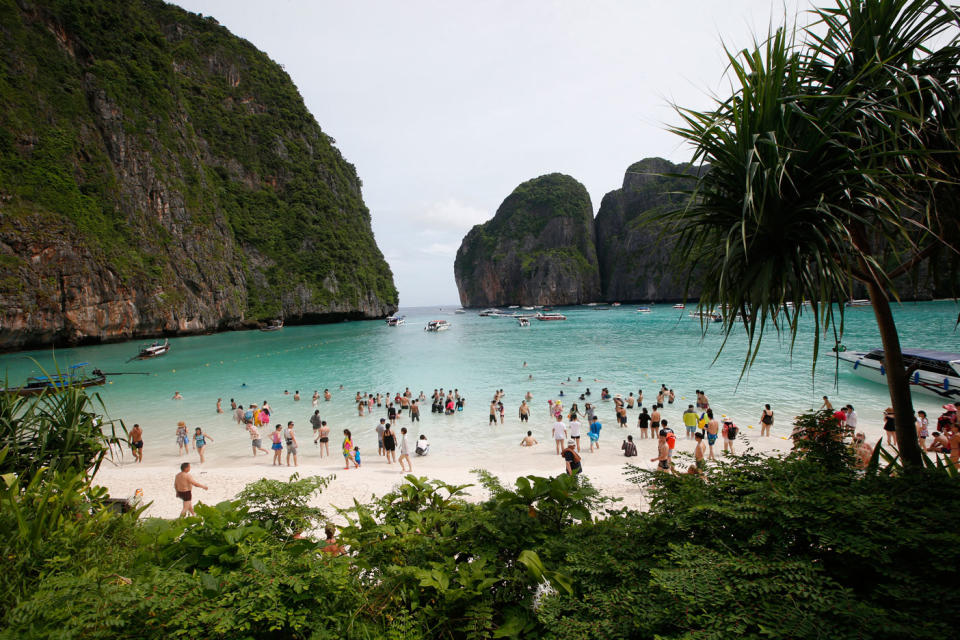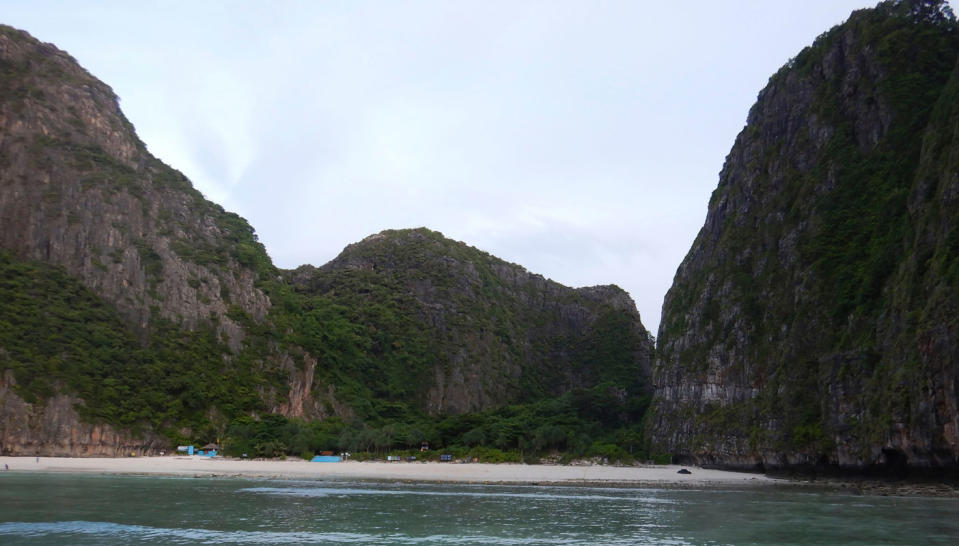Beach made famous in movie to close due to tourist damage
Once a pristine Thai paradise, the secluded bay made famous by the Leonardo DiCaprio movie “The Beach” has been exhausted by mass tourism. Now it’s getting a break.
After Friday, the daily influx of dozens of boats and thousands of visitors unsuccessfully scrambling for an unspoiled view of Maya Bay’s emerald waters and glistening white sand will end.
The attraction is being closed for four months to give its coral reefs and sea life a chance to recover.
Thailand has promoted unfettered tourism for decades and the onslaught on Maya Bay, which is on Phi Phi Leh Island in the Andaman Sea, has only picked up pace in recent years. Authorities now say they are striving to balance profit and conservation and the closure will happen every year.

It is part of a rethink happening globally about unrestricted tourism that brings in big dollars but damages historic sites, harms the environment and often alienates locals.
Many of Thailand’s marine national parks are closed from mid-May to mid-October during the monsoon season but because of Maya Bay’s popularity, it hasn’t had a break since a Hollywood crew set foot on its sands in 1999 to film the dark backpacker tale based on a novel by Alex Garland. Its corals have been decimated by the suffocating clouds of sand and sediment churned up by speedboats.
“I tried to push this campaign for many, many years, but you know in Thailand we are a tourism industry country and we need a lot of money, so before not so many people listened,” said Thon Thamrongnawasawat, a marine biologist and member of a government committee on development and the environment.
“It should have been done 10 years ago but at least it has been done,” he said.
Thailand had about 35 million international visitors last year, a five-fold increase in little more than two decades.

Shi Pengfei, among the last tourists to visit Maya Bay before its closure, said he had no idea that there would be so many people on the beach.
“I feel that there are so many people here,” said Shi, from Henan, China. “The government’s plan to close off the beach for a few months is only natural because the ocean needs a break, a chance to recover, so that the next generation can have a better and even more beautiful destination.”
But locals aren’t entirely happy. The head of the Phi Phi Tourist Business Association, Watrapol Jantharo, said he was surprised when the closure was announced in March by Thailand’s National Parks and Wildlife Department.
He said locals were under the impression that Maya Bay would only be closed to boats, while visitors would still walk to the bay from the other side of the island.
“We are not against protecting our environment,” he said. “We know full well that Maya Bay is our important resource, like a rice field to a farmer, but we wish there are more communications about the government’s plan before the decision was made.”

The government has set a limit of 2,000 tourists a day when the bay reopens — about half the current number. Boats will no longer be allowed to anchor but must dock on the opposite side of the island.
“Now that the government has this plan, we can’t change it. But we could use this opportunity to tell the world that we do not just have Maya Bay. There are 10 other beautiful beaches and islands around here that tourists can enjoy,” said Watrapol.
Thailand’s efforts to protect certain islands after decades of unregulated tourism began about three years ago under the current military junta, which has banned the types of protests such moves may have sparked had they been announced by civilian governments.
Yoong Island, part of the Phi Phi island chain, and Tachai Island in the Similan Islands National Park, have been off-limits to tourists since mid-2016.

Thon, who surveyed both islands recently, said he was amazed by the results. Waters that were devoid of fish are now teeming, he said, and there is about 10,000 square metres of newly recovered coral off one of the islands.
At Maya Bay, park rangers have been preparing a coral propagation program, attaching it to rocks that will be placed in the bay once the tourists are gone.
“We’re almost certain that something good will happen in Maya Bay,” Thon said.

